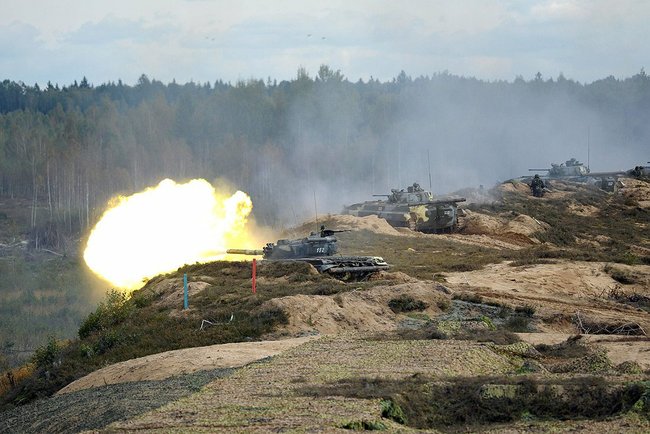
Raw Numbers on Military Drills Suggest a Gap in the West’s Deterrence
Readers who don’t specialize in NATO or military affairs may have missed a report from the NATOSource blog last week on a wide gap between the scale of military exercises conducted by Russia and by the NATO alliance. In the past two years, Russia’s major military exercises deployed a total of about 745,000 troops, while those of NATO countries involved a total of some 157,000. (Actually, only 72,000 troops took part in full NATO exercises; 85,000 participated in drills run by individual NATO member states.)
These very broad comparisons are reached simply by totaling the published numbers of participants in each event. (Clearly, some personnel may have been deployed, and thus counted here, in more than one exercise.)
“While exercises are not the sole indicator of military readiness and capability,” the numbers show “a troubling disparity in magnitude,” Atlantic Council Senior Fellow Ian Brzezinski and analyst Nicholas Varangis write. The disparity is especially notable amid the debates among transatlantic leaders and publics over how best to deal with Russia’s assault on Ukraine.
Deterrence in Eastern Europe
As Russia prosecutes its war in Ukraine and tries to intimidate other former Soviet republics, including the three (NATO-member) Baltic states, the only effective deterrence will come from conventional military force deployed close at hand, according to Senior Fellow Henrik Breitenbauch. “Only a sufficient conventional deterrence, can make sure Russian decision-makers do not … make a grave strategic over-reach” because they calculate that “they could be able to cross into NATO territory without being seriously penalized” as they traverse the borders, Breitenbauch wrote in New Atlanticist in April.
“When it comes to risk perceptions, the relevant comparison may not be between Russia’s defense budget (about $68 billion according to the Military Balance) and the US budget (about $600 billion), but between Russia and the aggregate defense budgets of Estonia, Latvia and Lithuania (about $1.2 billion),” Breitenbauch wrote. “Distributed on the ground, Russia’s conventional advantage in the Baltic states region is clear.”
Brzezinski and Varangis also focus on the distribution of forces. After NATO leaders agreed in September to “step up the Alliance’s exercise regime,” the alliance this year will run a drill, called Trident Juncture, “in Spain, Portugal, and Italy with 25,000 troops. Norway has offered to host an exercise of similar magnitude in 2018 [the two analysts write]. While these are useful events, shouldn’t such exercises be held in Poland, the Baltic States or Romania which are more proximate to Russia and are more directly threatened by Moscow’s invasion of Ukraine?”
Read the full posting by Brzezinski and Varangis, including their raw numbers on military exercises, at NATOSource.
Image: Russian tanks fire from a ridgeline during Russia's "Zapad 2013" exercise, which deployed 90,000 troops -- more than all NATO joint exercises conducted in the past two years. (Russian Presidential Press Office/www.kremlin.ru)
